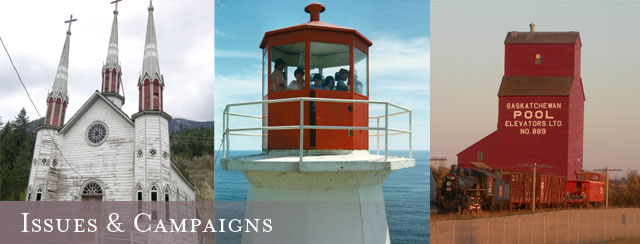
Canada is the only G-8 country without laws to protect historic places owned by its national government.
Canadian property and civil rights—including heritage protection—come under the exclusive jurisdiction of provincial or territorial governments. Legal protection of individual properties of heritage value (and sometimes districts) resides with these governments and their municipalities.
Significant gaps remain, particularly at the federal level. Federal property does not come under provincial jurisdiction, so the approximately 1,300 heritage properties owned by the federal government have no legal protection. The Historic Sites and Monuments Act allows for the recognition of national historic sites, but this recognition is solely commemorative. It has no legal status.
Since its creation in 1973, the National Trust has worked with all levels of government to encourage the adoption and improvement of legislation to protect heritage property. We have also helped spearhead campaigns to protect heritage property within the federal jurisdiction, culminating in the Heritage Railway Stations Protection Act (1988) and the Heritage Lighthouse Protection Act (2008).
